Thursday, December 30, 2010
The Wildest Ride
Thunder Bay writer Charles Wilkins is starting out to row across the Atlantic. Here is his latest letter as he prepares for this wild adventure.
December 28, 2010
Hello Joan and to all of you who, in your variety of ways, have so faithfully supported my Atlantic adventure!
And goodbye, too -- or let us say, farewell -- as I count down the hours to my departure for Casablanca tomorrow morning, then on to Agadir the following day. As I write, our twin-hulled rowboat, Big Blue (aka "Blue Cat" or "Cat Balou" as at least one crew member has called it) is rocking across the Atlantic, dismantled, in a pair of shipping containers, aboard a 720-foot freighter, on its way from New York to Agadir, where it is scheduled to arrive on January 2.
We expect to have the boat reassembled, rigged, packed and ready for the crossing by January 8 or 9, although our actual departure will be somewhat influenced by the weather. The first few days will take us about 400 miles south along the coast from Agadir to the little fishing port of Tarfaya, from where we will head out to sea. Officially, the crossing will begin as we pass the Canary Islands, 30 or 40 kilometres offshore. Must say, I find it rather exotic and remote -- and thereby perhaps appropriate -- that we should be starting this undeniably foreign adventure on the coast of Africa, which to me has always seemed the "remotest" of populated continents.
When you last heard from me I was heading off to Long Island for three days of sea training aboard Big Blue, which we launched with a swig of champagne on the afternoon of November 7. That evening, we set out on our first overnight row -- two hours on, two off, on the cold Atlantic off Shelter Island, near
Montauk, which some of you will remember as the location of the famous cautionary art film, Jaws (". all we know is that whatever's down there is big. We don't know how big.").
On that eventful first row, I had intended to position myself with the second watch of rowers, so that I could simply observe for the first two hours, after which I intended to row out of the back seating position so that nobody would actually see me wielding my oar. But as we pulled away from the dock I rather unwisely positioned myself on the small rear deck standing beside our captain, Angela Madsen, who when she realized there was an empty second seat on the starboard hull, told me I was welcome to take it. go ahead!
What was I to say -- no thanks!
Within seconds I was in the seat, feet in the stirrups, pulling hard on my big sweep oar. And just seconds after that had become the proverbial wrench in the works; my dirty little secret was out. What I had hoped to keep hidden at least until the second watch began was that I had never in my life rowed in a proper rowing boat with any sort of crew, and moreover had never worked a sweep oar (all of my rowing to date had been done with sculling oars, which is to say double oars).
Coincidentally, I just happened to be seated behind one of our strongest rowers, Ryan Worth, a former collegiate rowing star and now a coach at the University of Tennessee. I am not exaggerating to acknowledge that during the first twenty minutes aboard I clattered my oar off Ryan's oar perhaps 15 times, each time offering up a plaintive little "sorry Ryan". "oh, sorry, Ryan". "woops, sorry, Ryan". etc.
Needless to say, banging your oar off the oar of a rower in front of you, or behind, is a decided no-no among practitioners of this ancient team sport. And so it was that about twenty minutes in, Ryan shipped his oar, turned to me and said in a most patient and amicable voice (in more or less these words): "Okay, I see where we're at, Charlie. And what I normally take about three months to teach my freshman rowers I'm going to teach you in thirty seconds" -- in other words, listen and listen good! And he proceeded to give me three
or four fundamental instructions that I took to heart and began immediately to incorporate into my technique and pacing. The next day, I got further instruction from Liz Koenig, another rowing coach, and within 24 hours was, if not exactly rowing like a pro, or even a real rower, rowing with sufficient awareness and capability that I was able to present a plausible impersonation of a member of an ocean rowing team.
On the last day of the training weekend, we all donned heavy Bailey survival suits and leapt into the north Atlantic off the docks of the Shelter Island Yacht Club, where we were pelted with fire hoses by the local Fire Department as we attempted to get aboard an inflatable lifeboat and ultimately onto Big Blue. This in the interest of "survival experience" should we by chance suffer a dousing at sea.
As I mentioned in my last report, the expedition has changed, invariably for the better, since our captain Angela Madsen replaced her predecessor in September. For one thing communication is better. And so is the domestic capacity of the boat. For example, we now have hot water aboard. I used to get asked, What will you do for a toilet? And until Angela's ascendancy, the answer was simply Hang over the side. Those of you with refined hopes for us will be glad to know that Angela has recently mandated a small "head," as the toilet on a boat is called, a primitive marine biffy of some sort, as yet unseen by the crew, with at least a modicum of privacy (for what privacy will be worth on a boat where eight of us at a time will be sleeping in quarters only marginally "bigger than a breadbox" as they used to say on What's My Line?).
Another question I've been asked several times in recent weeks is whether or not there is "any safety equipment aboard" -- which of course there is. As I explained recently to my concerned daughters, Georgia and Eden, we will be carrying 16 survival suits, at least a couple of location signallers (GPS related), and two eight-person inflatable lifeboats. Must say, at this stage, that my fears are less about uncertainties -- storms, sharks, and so on -- than about the fateful certainties that will undoubtedly affect us; I am speaking about exhaustion, blisters, salt sores, all of that. More prevalently, I am concerned about whether or not my months of training will hold up once I get out there on the Main. A rower who was part of a recent attempt at crossing the Atlantic aboard a boat called La Mondiale, said that for most of his fellow crew members exhaustion was so prevalent by the end of the fourth or fifth day that a couple of them couldn't remember where they'd come from (fortunately, I carry clear impressions and memories of Thunder Bay). I got good advice recently from Chris Bailey, the Commodore of the Thunder Bay Yacht Club, who urged me to establish my sleeping patterns right away, to get accustomed to crawling into the bunk as soon as possible after my two hours of rowing are up and to staying there as long as possible before getting back to the oar. Which I intend to do.
Meanwhile, the last six weeks have been a busy round of long training sessions, putting together kit and food, and taking care of the many little exigencies that all travellers must address as their departure date nears. Most of my food is with the boat in the shipping containers, on its way to Morocco. My food packs, if you're interested, contain a lot of freeze-dried stuff (including vacuum-packed wads of culinary favourites such as pad Thai and key lime pie), dozens of little packets of powdered Gatorade, 96 Clif bars, and twenty vacuum-packed cheese and bacon "sandwiches" of a sort that are reputed to have been sent into space with the astronauts (probably these exact twenty sandwiches).
Some of my food I'll be carrying with me among my clothing and kit. dried mangoes, raisins, fruit cake, candy, plus 6o little packets of the headiest power sap known to humanity, a concentrated wolf berry extract known as Zang Xai Red, supplied to me by Sue Langer of Young Living health food products, and expedited my way by my friend Marjie Bettiol.
Because I am writing this report on a MacBook instead my customary little Dell laptop, I have somehow lost my capability to exhibit the logos and insignia of my several commercial sponsors, which as of my last report to you included Gargoyles Grille and Ale, in Thunder Bay; Gerry Waldron Consulting Ecologists, in Amherstburg, Ontario; and Explore Magazine in Toronto. I'm happy to say that two new business sponsors have recently committed to my adventure: bfusion designer clothing, owned by Margaret Bettiol and Sue Bishop, and Young Living nutritional and health products. I am also very pleased to announce the generous sponsorship of the Thunder Bay Yacht Club, a most welcome participant
in my adventure.
I have promised so many of you in recent days that I would supply you with a website address so that you could follow our expedition. The best way of doing that will be to go to bigbluerow.com . or to rocexpedition.com . Actually, the former links into the latter, although not necessarily vice versa. On one or both of those sites you will find some photos of the boat and of our training, and will be able to get at least sporadic updates from the boat (or so I understand it). You will also be able to follow our progress on a map of the Atlantic (I believe on the rocexpedition site), where we will appear as a tiny dot (we will of course also appear as a tiny dot in space and time on the actual Atlantic. but let us not get mystical at this point). If all goes well the dot will reach Barbados sometime around mid-February. As you know, our attempt will be to establish a new record time for the crossing, a record that now stands at 33 days. We do have a competitor at this point, a fine boat named Hallen (formerly Triton), which will be leaving the Canaries with its strong British crew a week or more prior to our own departure and may well establish a new record before we get to Barbados. So in effect we will be chasing Hallen's record, not the existing one.
We are going with a full crew of sixteen, two of whom were added recently and whom I have not yet met. Unfortunately, we lost one of our devoted crew, Anne Maurissen, from Belgium, when she fell on the ice on Christmas Eve and fractured her wrist.
As I mentioned, Kelly Saxberg, the cinematic diva of the north, is making a film about our voyage and will be travelling both to Morocco and Barbados with her talented young cameraman, Damien Gilbert. Some of Kelly's footage from the training weekend can be seen on the bigbluerow.com site . or on her own website, shebafilms.com . Footage from the actual voyage will be shot by one of our rowers, Dylan White.
I have been playing down any symphonic goodbyes with family and friends, but must say I have greatly appreciated the fond and heartfelt good wishes that so many of you have sent my way.
I am heading out optimistically and with great respect for my fellow crew members and for our engineer, David, and our captain, Angela. And of course for the ocean. As the writer Simon Winchester said of the Atlantic, "It is a grey and heaving sea, not infrequently storm-bound, ponderous with swells, a sea that in the mind's eye is thick with trawlers lurching, bows up, then crashing down through great white curtains of spume, tankers wallowing across the swells, its weather so often on the verge of gales and all the while its waters moving with an air of settled purpose, simultaneously displaying incalculable power and inspiring by this display perpetual admiration, respect, caution and fear."
We will be counting on the Trade Winds to move us along. and on all the energy we can muster for our rowing.
And so I go... deeply appreciative of your support and of your good wishes for the trip.
I look forward to reporting to you all upon my return.
Happy New Year! Farewell for now.
Sincerely and affectionately, Charlie
December 28, 2010
Hello Joan and to all of you who, in your variety of ways, have so faithfully supported my Atlantic adventure!
And goodbye, too -- or let us say, farewell -- as I count down the hours to my departure for Casablanca tomorrow morning, then on to Agadir the following day. As I write, our twin-hulled rowboat, Big Blue (aka "Blue Cat" or "Cat Balou" as at least one crew member has called it) is rocking across the Atlantic, dismantled, in a pair of shipping containers, aboard a 720-foot freighter, on its way from New York to Agadir, where it is scheduled to arrive on January 2.
We expect to have the boat reassembled, rigged, packed and ready for the crossing by January 8 or 9, although our actual departure will be somewhat influenced by the weather. The first few days will take us about 400 miles south along the coast from Agadir to the little fishing port of Tarfaya, from where we will head out to sea. Officially, the crossing will begin as we pass the Canary Islands, 30 or 40 kilometres offshore. Must say, I find it rather exotic and remote -- and thereby perhaps appropriate -- that we should be starting this undeniably foreign adventure on the coast of Africa, which to me has always seemed the "remotest" of populated continents.
When you last heard from me I was heading off to Long Island for three days of sea training aboard Big Blue, which we launched with a swig of champagne on the afternoon of November 7. That evening, we set out on our first overnight row -- two hours on, two off, on the cold Atlantic off Shelter Island, near
Montauk, which some of you will remember as the location of the famous cautionary art film, Jaws (". all we know is that whatever's down there is big. We don't know how big.").
On that eventful first row, I had intended to position myself with the second watch of rowers, so that I could simply observe for the first two hours, after which I intended to row out of the back seating position so that nobody would actually see me wielding my oar. But as we pulled away from the dock I rather unwisely positioned myself on the small rear deck standing beside our captain, Angela Madsen, who when she realized there was an empty second seat on the starboard hull, told me I was welcome to take it. go ahead!
What was I to say -- no thanks!
Within seconds I was in the seat, feet in the stirrups, pulling hard on my big sweep oar. And just seconds after that had become the proverbial wrench in the works; my dirty little secret was out. What I had hoped to keep hidden at least until the second watch began was that I had never in my life rowed in a proper rowing boat with any sort of crew, and moreover had never worked a sweep oar (all of my rowing to date had been done with sculling oars, which is to say double oars).
Coincidentally, I just happened to be seated behind one of our strongest rowers, Ryan Worth, a former collegiate rowing star and now a coach at the University of Tennessee. I am not exaggerating to acknowledge that during the first twenty minutes aboard I clattered my oar off Ryan's oar perhaps 15 times, each time offering up a plaintive little "sorry Ryan". "oh, sorry, Ryan". "woops, sorry, Ryan". etc.
Needless to say, banging your oar off the oar of a rower in front of you, or behind, is a decided no-no among practitioners of this ancient team sport. And so it was that about twenty minutes in, Ryan shipped his oar, turned to me and said in a most patient and amicable voice (in more or less these words): "Okay, I see where we're at, Charlie. And what I normally take about three months to teach my freshman rowers I'm going to teach you in thirty seconds" -- in other words, listen and listen good! And he proceeded to give me three
or four fundamental instructions that I took to heart and began immediately to incorporate into my technique and pacing. The next day, I got further instruction from Liz Koenig, another rowing coach, and within 24 hours was, if not exactly rowing like a pro, or even a real rower, rowing with sufficient awareness and capability that I was able to present a plausible impersonation of a member of an ocean rowing team.
On the last day of the training weekend, we all donned heavy Bailey survival suits and leapt into the north Atlantic off the docks of the Shelter Island Yacht Club, where we were pelted with fire hoses by the local Fire Department as we attempted to get aboard an inflatable lifeboat and ultimately onto Big Blue. This in the interest of "survival experience" should we by chance suffer a dousing at sea.
As I mentioned in my last report, the expedition has changed, invariably for the better, since our captain Angela Madsen replaced her predecessor in September. For one thing communication is better. And so is the domestic capacity of the boat. For example, we now have hot water aboard. I used to get asked, What will you do for a toilet? And until Angela's ascendancy, the answer was simply Hang over the side. Those of you with refined hopes for us will be glad to know that Angela has recently mandated a small "head," as the toilet on a boat is called, a primitive marine biffy of some sort, as yet unseen by the crew, with at least a modicum of privacy (for what privacy will be worth on a boat where eight of us at a time will be sleeping in quarters only marginally "bigger than a breadbox" as they used to say on What's My Line?).
Another question I've been asked several times in recent weeks is whether or not there is "any safety equipment aboard" -- which of course there is. As I explained recently to my concerned daughters, Georgia and Eden, we will be carrying 16 survival suits, at least a couple of location signallers (GPS related), and two eight-person inflatable lifeboats. Must say, at this stage, that my fears are less about uncertainties -- storms, sharks, and so on -- than about the fateful certainties that will undoubtedly affect us; I am speaking about exhaustion, blisters, salt sores, all of that. More prevalently, I am concerned about whether or not my months of training will hold up once I get out there on the Main. A rower who was part of a recent attempt at crossing the Atlantic aboard a boat called La Mondiale, said that for most of his fellow crew members exhaustion was so prevalent by the end of the fourth or fifth day that a couple of them couldn't remember where they'd come from (fortunately, I carry clear impressions and memories of Thunder Bay). I got good advice recently from Chris Bailey, the Commodore of the Thunder Bay Yacht Club, who urged me to establish my sleeping patterns right away, to get accustomed to crawling into the bunk as soon as possible after my two hours of rowing are up and to staying there as long as possible before getting back to the oar. Which I intend to do.
Meanwhile, the last six weeks have been a busy round of long training sessions, putting together kit and food, and taking care of the many little exigencies that all travellers must address as their departure date nears. Most of my food is with the boat in the shipping containers, on its way to Morocco. My food packs, if you're interested, contain a lot of freeze-dried stuff (including vacuum-packed wads of culinary favourites such as pad Thai and key lime pie), dozens of little packets of powdered Gatorade, 96 Clif bars, and twenty vacuum-packed cheese and bacon "sandwiches" of a sort that are reputed to have been sent into space with the astronauts (probably these exact twenty sandwiches).
Some of my food I'll be carrying with me among my clothing and kit. dried mangoes, raisins, fruit cake, candy, plus 6o little packets of the headiest power sap known to humanity, a concentrated wolf berry extract known as Zang Xai Red, supplied to me by Sue Langer of Young Living health food products, and expedited my way by my friend Marjie Bettiol.
Because I am writing this report on a MacBook instead my customary little Dell laptop, I have somehow lost my capability to exhibit the logos and insignia of my several commercial sponsors, which as of my last report to you included Gargoyles Grille and Ale, in Thunder Bay; Gerry Waldron Consulting Ecologists, in Amherstburg, Ontario; and Explore Magazine in Toronto. I'm happy to say that two new business sponsors have recently committed to my adventure: bfusion designer clothing, owned by Margaret Bettiol and Sue Bishop, and Young Living nutritional and health products. I am also very pleased to announce the generous sponsorship of the Thunder Bay Yacht Club, a most welcome participant
in my adventure.
I have promised so many of you in recent days that I would supply you with a website address so that you could follow our expedition. The best way of doing that will be to go to bigbluerow.com . or to rocexpedition.com . Actually, the former links into the latter, although not necessarily vice versa. On one or both of those sites you will find some photos of the boat and of our training, and will be able to get at least sporadic updates from the boat (or so I understand it). You will also be able to follow our progress on a map of the Atlantic (I believe on the rocexpedition site), where we will appear as a tiny dot (we will of course also appear as a tiny dot in space and time on the actual Atlantic. but let us not get mystical at this point). If all goes well the dot will reach Barbados sometime around mid-February. As you know, our attempt will be to establish a new record time for the crossing, a record that now stands at 33 days. We do have a competitor at this point, a fine boat named Hallen (formerly Triton), which will be leaving the Canaries with its strong British crew a week or more prior to our own departure and may well establish a new record before we get to Barbados. So in effect we will be chasing Hallen's record, not the existing one.
We are going with a full crew of sixteen, two of whom were added recently and whom I have not yet met. Unfortunately, we lost one of our devoted crew, Anne Maurissen, from Belgium, when she fell on the ice on Christmas Eve and fractured her wrist.
As I mentioned, Kelly Saxberg, the cinematic diva of the north, is making a film about our voyage and will be travelling both to Morocco and Barbados with her talented young cameraman, Damien Gilbert. Some of Kelly's footage from the training weekend can be seen on the bigbluerow.com site . or on her own website, shebafilms.com . Footage from the actual voyage will be shot by one of our rowers, Dylan White.
I have been playing down any symphonic goodbyes with family and friends, but must say I have greatly appreciated the fond and heartfelt good wishes that so many of you have sent my way.
I am heading out optimistically and with great respect for my fellow crew members and for our engineer, David, and our captain, Angela. And of course for the ocean. As the writer Simon Winchester said of the Atlantic, "It is a grey and heaving sea, not infrequently storm-bound, ponderous with swells, a sea that in the mind's eye is thick with trawlers lurching, bows up, then crashing down through great white curtains of spume, tankers wallowing across the swells, its weather so often on the verge of gales and all the while its waters moving with an air of settled purpose, simultaneously displaying incalculable power and inspiring by this display perpetual admiration, respect, caution and fear."
We will be counting on the Trade Winds to move us along. and on all the energy we can muster for our rowing.
And so I go... deeply appreciative of your support and of your good wishes for the trip.
I look forward to reporting to you all upon my return.
Happy New Year! Farewell for now.
Sincerely and affectionately, Charlie
Subscribe to:
Post Comments (Atom)
















































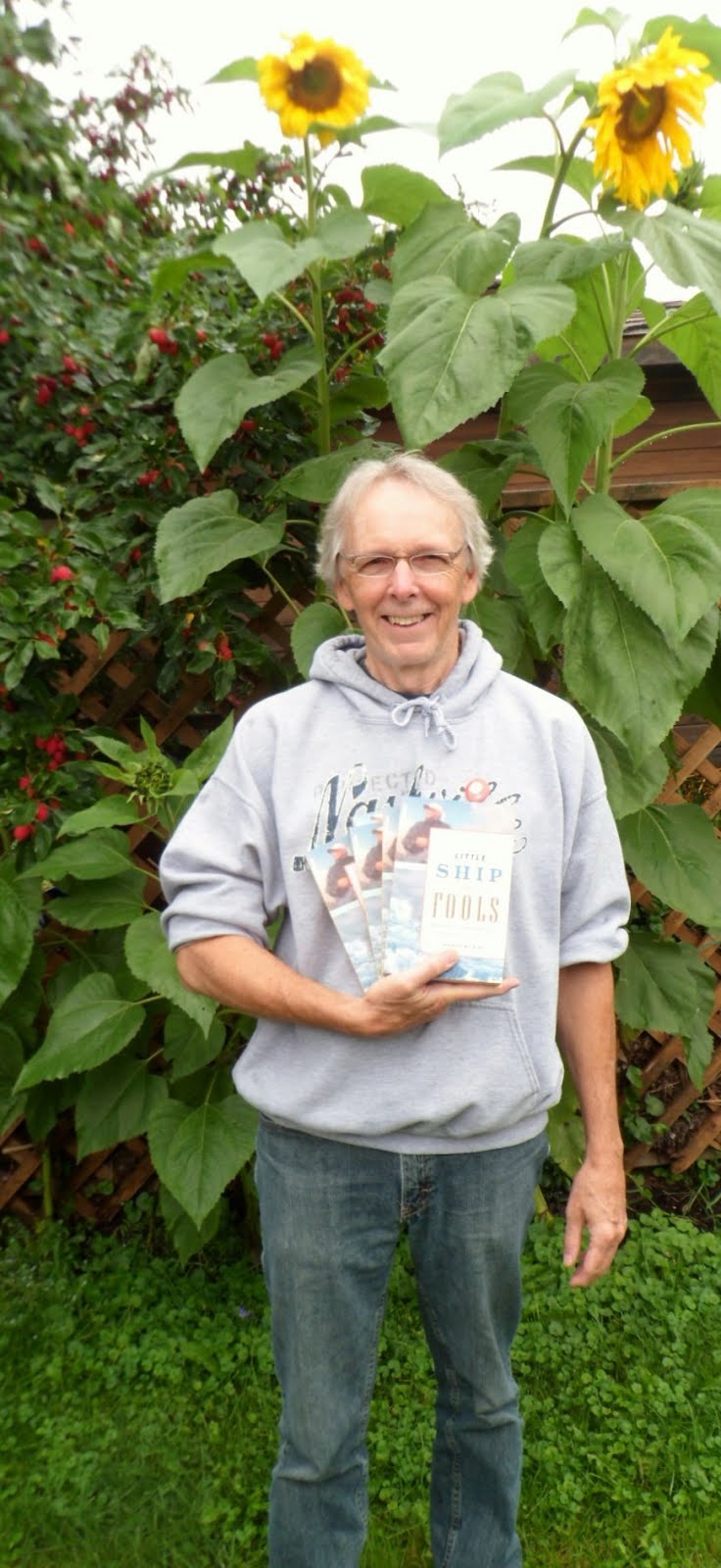
































































































































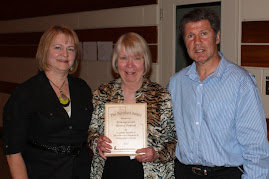














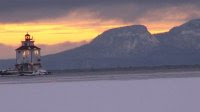

















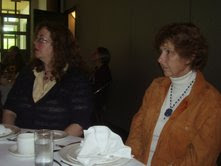



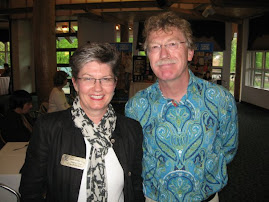







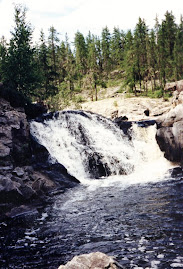









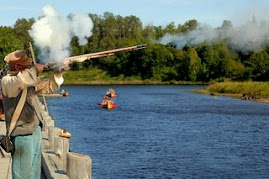
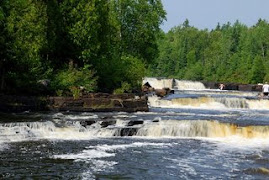


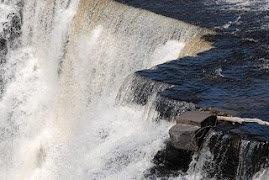
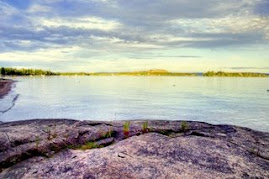

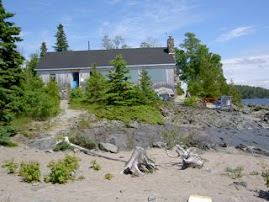


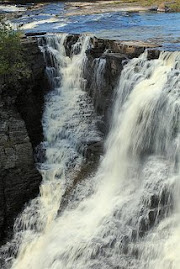
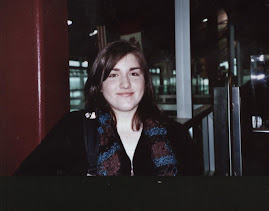
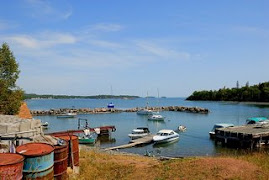



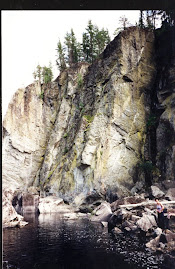

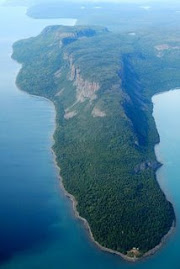
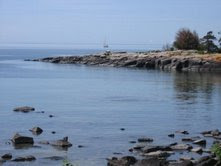

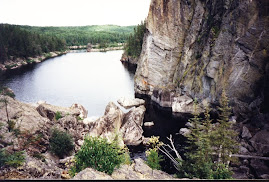

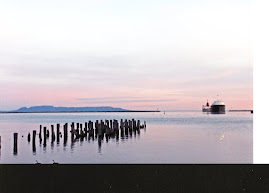





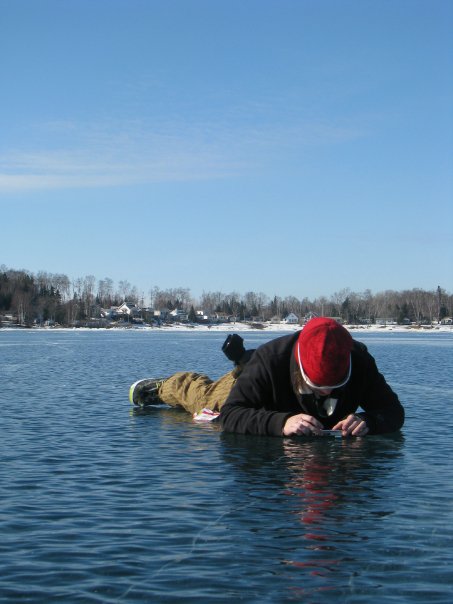

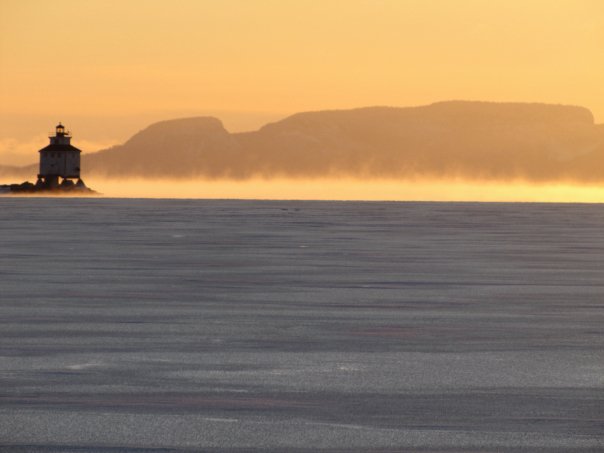

No comments:
Post a Comment